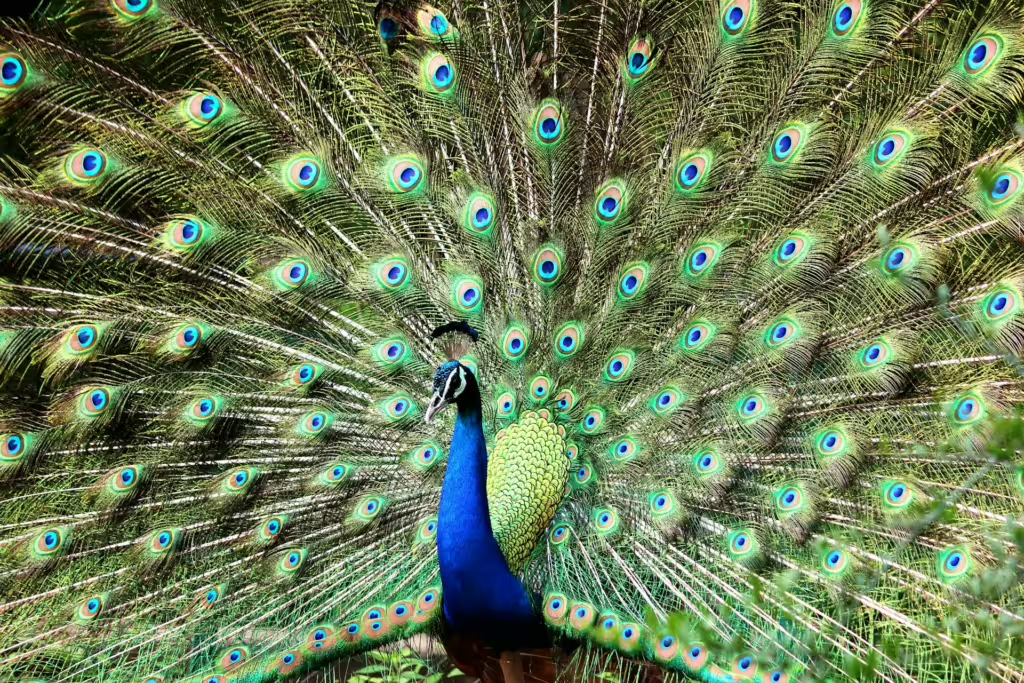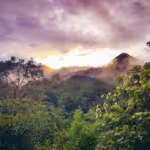In the animal kingdom, birds often stand out some of the most vibrant and visually striking creatures on the planet. Though some are drab in coloration in order to blend in with their surroundings, many bird species display an astonishing array of colors and patterns that captivate the imagination.
From the brilliant plumage of tropical rainforest birds to the dazzling feathers of those that dwell in the desert, the birds featured on the list below are not only beautiful, they also play essential roles in maintaining the ecological balance of their habitats.
In this article, we will explore several of the most exotic and colorful bird species from around the world. We will examine their distinctive features in fine detail, while also discussing the vital roles they play in their home ecosystems. Finally, we will go into the threats they face thanks for climate change, deforestation, pollution, poaching, and other human-derived factors.
Bird of Paradise (Paradisaeidae)
When it comes to lists of the most beautiful birds on the planet, the fabled Bird of Paradise, is often very near to the top. Looking at this amazing avian, it’s easy to say way. The Bird of Paradise is one of the most iconic and colorful birds on the planet. Native to New Guinea and parts of eastern Indonesia, it is the male of the species that has the most extravagant and vibrant plumage, which it uses to help find a mate. You will find that is the case with many of the colorful animals on this list, as birds often display vibrant colors and exotic courtship dances in order to attract a mate. This differentiation of color between male and female birds of a species is known as sexual dichromatism.
The male Bird of Paradis’s coloration includes a dazzling mix of bright yellow, red, and turquoise feathers, but its ostentatious suit isn’t the only tool in it’s mating arsenal. These male birds are often seen performing complex courtship displays, flashing their colorful feathers to attract a mate. Additionally, the feathers’ intricate shapes and bright hues are not just for showing off—they also have a purpose in communication and species recognition.
Birds of Paradise inhabit tropical forests and like many tropical birds, their purpose is to contribute to pollination and seed dispersal. This is due to the fact that their primary diet consists of fruits, seeds, along with the occasional insect. Unfortunately, as is the case with so many tropical species, the Bird of Paradise faces significant threats due to habitat loss caused by deforestation. The encroachment of human development for cities and agriculture has already dealt a deadly blow to the forests in their New Guinea homeland, and it has led to a serious decline in their populations. People also hunt these birds, illegally, we might add, in order to get their feathers; which are prized in traditional ceremonies. This only exacerbates the situation, putting more undue pressure on the remaining population. Still, conservation efforts are underway to protect their habitats and ensure that these remarkable birds continue to thrive.
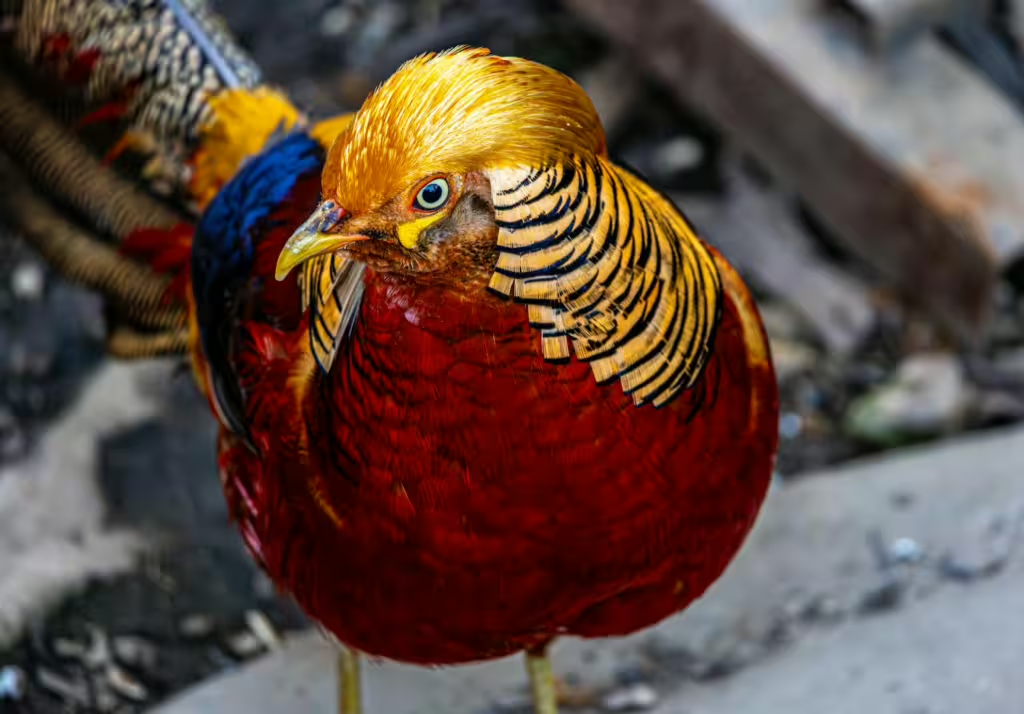
Peacock (Pavo cristatus)
If the picture that drew you to this article was the peacock, then you’ll be glad to see that it has the number two spot on our list. Also known as the Indian Peafowl, these cerulean birds are another striking example of a colorful avian creature with an impressive display of feathers. Native to South Asia, particularly India, the peacock is renowned and most recognized for its iridescent tail feathers, which feature an intricate array of blue, green, and gold colorations. The male peacock, not to be confused with the female, peahen, uses these feathers during the course of its courtship ritual. The male peacock unfurls its tail in a magnificent display to attract a mate, showcasing its vibrant colors and eye-catching patterns. As with several bird species, this display is a key part of sexual selection, and female peahens tend to choose only males that possess the most stunning, healthy-looking plumage.
Peafowl, and by that we mean both sexes, are primarily herbivores, feeding on seeds, fruits, and insects. Many zoos, parks, and even large expansive manors often have peafowl on the premises because of the fact that they can keep local insect populations at bay; also, they do sort of brighten things up a bit. It because of their important role in controlling insect populations and spreading seeds, that they are so valuable to the health of their ecosystem. While the peacock is not currently endangered, it still faces the same threats as other forest-dwelling animals. Habitat destruction, hunting, and illegal pet trade have led to localized declines in peacock populations in the wild. Still, in many parts of Asia, peafowls are revered and protected, which actually contributes to their survival in the wild.
Scarlet Macaw (Ara macao)
Parrots are among the most intelligent and sociable birds on the planet. In addition to their remarkable capacity for learning and communication, these birds stand out as some of the best and brightest in the animal kingdom. We cannot mention every parrot on this list, but we can mention one particularly iconic species, the Scarlet Macaw. This stunningly beautiful bird native to the rainforests of Central and South America and with its bright red, yellow, and blue feathers, it’s kind of hard to miss amidst the greenery. These birds usually form strong social bonds, often forming lifelong partnerships with their mates, and often, their owners when bred in captivity. Like most birds, these creatures primarily feed on fruits, nuts, and seeds, using their powerful beaks to crack open the hard shells. The result of all this cracking and seed-eating is that scarlet macaws play an essential role in seed and pollen dispersal, which promoting plant growth throughout their rainforest habitats.
Unfortunately, the Scarlet Macaw is facing multiple threats at a number of different axes. Whether by rampant habitat loss due to deforestation in Central and South America or the illegal trapping and selling of these animals into the pet trade, there have been significant population declines. People don’t just trap and transport them as pets, either, many hunt and kill them for their highly prized feathers. If we are to save this iconic bird, more effort is needed, though conservation programs such as captive breeding and reintroduction projects, have already been initiated to help restore macaw populations in the wild.
Golden Pheasant (Chrysolophus pictus)
The Golden Pheasant might not be as popular as the birds mentioned thus far, but it nevertheless one of the most visually striking birds in the world. Known for its vibrant plumage and unique feather patterns, this remarkable animal is native to the forests and mountains of western China. The Golden Pheasant boasts a brilliant combination of red, yellow, and you guess it, gold, feathers, as well as having a distinctive golden crest atop its head. The male Golden Pheasant uses his colorful plumage like the peacock and the Bird of Paradise, as a means of attracting females during the breeding season, and his bold display is a symbol of his health and genetic fitness.
These pheasants, as with many of the beauteous birds on this list are omnivores, feeding on a diet of seeds, berries, insects, and in some cases, small reptiles. Their role in the ecosystem includes controlling the often prodigious insect populations and dispersing seeds. However, as renowned and beautiful as it is, the Golden Pheasant is still threatened by habitat loss and hunting for its feathers, which are highly valued in the ornamental trade. Though the species is not currently endangered, its populations are declining at an alarming rate in some areas.
5. Mandarin Duck (Aix galericulata)
Some readers might consider a good number of the species mentioned on this list to be almost chicken-like in their behavior and morphology, specifically the peafowl and the golden pheasant, but ducks can be beautiful too! The Mandarin Duck is one of the most colorful and unique duck species on the planet. This wonderful waterfowl has striking plumage that makes it a favorite among birdwatchers. Native to East Asia, particularly China and Japan, the male Mandarin Duck demonstrates a vibrant mix of orange, purple, and green feathers, with intricate patterns that give it a truly exotic appearance. Living in ponds, lakes and rivers, these ducks feed on and forage for aquatic plants, small fish, and insects.
Mandarin Ducks help to maintain the balance of aquatic food webs, which is why they too are essential to their ecosystems. They contribute to controlling insect populations, and their feeding habits promote plant growth. In the wild, Mandarin Ducks face multiple threats from habitat destruction, particularly when it comes to the draining of wetland areas. As one might expect, these ducks are also hunted for their beautiful plumage. Still, efforts to conserve wetland areas are crucial for the survival of these breathtaking birds.
Quetzal (Pharomachrus mocinno)
The resplendent quetzal is so breathtakingly beautiful, that its very name is linked to ancient Central American mythology and folklore. Named after the Mayan god Quetzalcoatl, this emerald bird is easily recognized by its vibrant green and red feathers. For many cultures, the bird itself is an enduring symbol of freedom and beauty, especially in Guatemala, where it is the national bird. Native to the cloud forests of Central America, the quetzal is a member of the trogon family, a group of birds that are characterized by their brilliant plumage and long tail feathers. The male quetzal, because of course the colorful ones are the males, use their resplendent feathers in elaborate courtship displays. Females choose a mate that is most attractive and who dances well, as both are good indicators of the male’s health and genetic fitness.
Quetzals are frugivores but are not above eating the occasional insect once in a while. They primarily feed on a diet of fruits, such as avocados. This diet makes the quetzal an important part of its ecosystem, where it aids in seed dispersal and promotes the growth of more forest; the latter of which is increasingly needed in recent years. Just as the forest the quetzals call home are disappearing, so too are the quetzals themselves. Deforestation and hunting, particularly in the cloud forests of Central America, has caused a serious decline in quetzal populations. As such, efforts to protect and restore these habitats have become essential for the survival of this iconic bird.
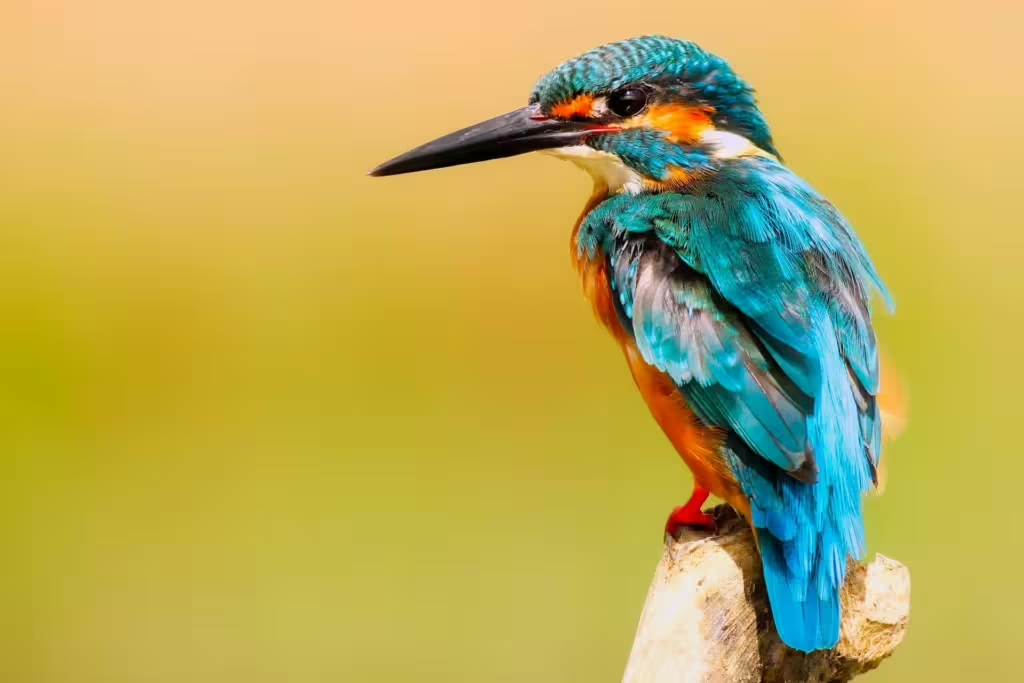
Kingfisher (Alcedo atthis)
The Kingfisher is another stunning bird that really stands out in its environment. Possessed of bright blue and orange plumage, this animal can be found across many regions from Europe to Asia and Africa. It is so-named because of its exceptional fishing skills, and the kingfisher is quite adept at diving into the water to catch small fish, insects, and crustaceans. Interestingly enough, this bird’s vibrant colors are not just visually striking, they actually serve a dual purpose, serving as camouflage in their aquatic environment.
Kingfishers are important predators within their home ecosystems and they help to regulate fish populations and maintain the balance of many types of freshwater habitats. As insectivores, these birds also play a role in controlling insect and small animal populations. Sadly, the kingfisher is facing threats from habitat destruction, particularly the pollution of freshwater habitats, and from the degradation of wetlands. One of the main concerns is that their nesting grounds may well disappear in the next decade, which could spell serious trouble for countless species and habitats that depend on the kingfisher.
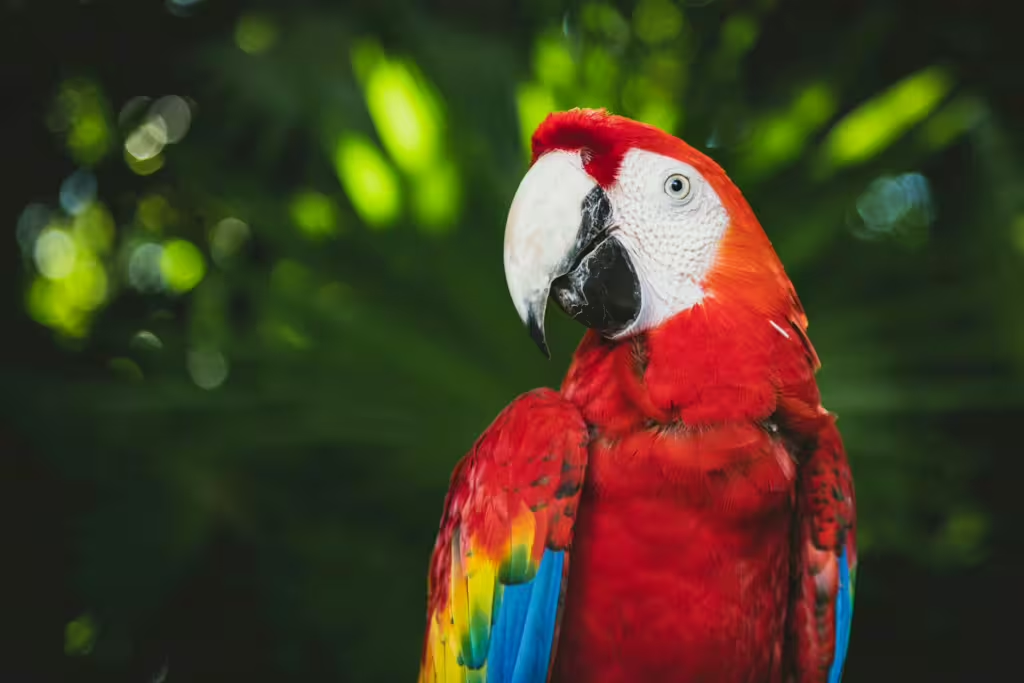
True Investigator Says…
As you can see, the vibrant and exotic birds on display in the sections above are more than just a collection of pretty faces. These visually captivating animals are crucial for the health of their ecosystems. They disperse seeds, keep insects in check, and help spread biodiversity wherever they are found. Sadly, many of these amazing avians face threats from habitat loss, illegal hunting, and the pet trade; and none of that seems to be getting any better without human intervention. Thus, it is vital that we continue to support and and all conservation efforts that may come about in order to protect these beautiful creatures and their habitats for future generations to enjoy.
Discover more from TrueInvestigator
Subscribe to get the latest posts sent to your email.
